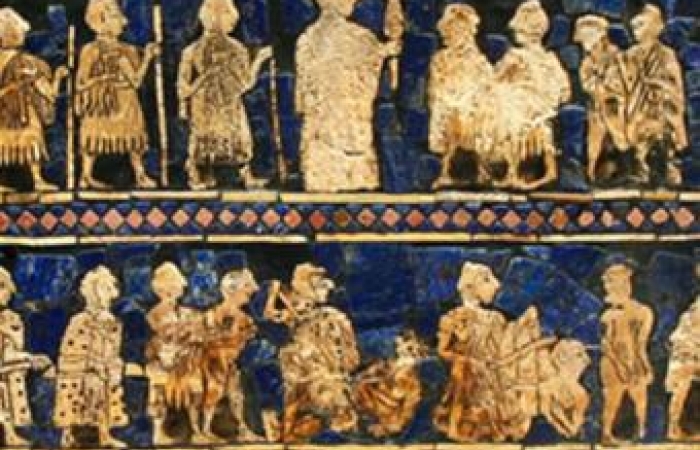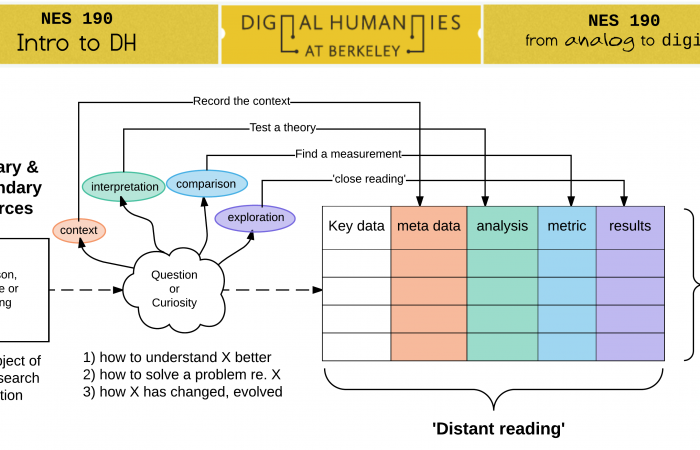Images of Eternity in 3D. The visualization of ancient Egyptian coffins through photogrammetry
Expanding on work accomplished through an earlier collaborative research grant, this project aims to build a new digital platform for an in-depth study of the ancient Egyptian funerary culture and its media. The main outcome will be a digital platform that allows to display a coffin in 3D and where users will be able to pan, rotate, and zoom in on the coffin, clicking on areas of text to highlight them and view an annotated translation together with other metadata (transcription of the hieroglyphic text, bibliography, textual variants, museological data, provenance, etc.)![]()
Automatic Authorship Attribution in the Hebrew Bible and Other Literary Texts
The Hebrew Bible is a composite text written by many authors and compiled over hundreds of years. With much of the academic analysis of the Bible dedicated towards discerning nested authorship, scholars closely examine word choice and style to infer distinct components. Despite centuries of advancement in understanding authorial layers within the Bible, attribution for many verses is still heavily debated. The principal aim of our research project is to develop a set of machine learning algorithms to contribute to the analysis of biblical authorship.![]()
Cuneiform Name Authority - Ur III Period
A multidisciplinary conference was organized at Berkeley in April of 2017, and introduced the goal of building a socio-economic network from the 15,000 Neo-Sumerian texts from Drehem, Iraq, ancient Puzriš-Dagan (2100-2000 B.C.E.). The project brought together archaeologists, cuneiform specialists, experts in text analysis and natural language processing from around the world, country and campus. The workshop delineated a workflow for building a social network database from the digitized text archives, hosted and curated by Dr.![]()
Expanding "Cuneiform De-Coded"
This project proposes to expand on Eduardo Escobar’s (PhD Candidate, NES) “Cuneiform De-Coded” software, which analyzes base values and hidden meanings within ancient texts that utilize the cuneiform script—the world’s first writing system. Like Chinese, and other script-based languages, the cuneiform script concealed multiple meanings within a single sign; for example, the sign “A,” in addition to its phonetic value /a/ can mean “water” and “son”; “A” was also an element in dozens of compound sign combinations.![]()
Digital Humanties: From Analog to Digital
This session will showcase research projects developed by students taking the course NES190A, Intro to Digital Humanities. We will present new methods and best practices for designing scalable research projects in the humanities from the ground up: from analog books to digital datasets.
Adam Anderson is a Mellon Postdoctoral Fellow in the Digital Humanities. His work brings together the fields of archaeology and computational linguistics to quantify the social and economic landscapes emerging during the late third to early second millennia in the ancient Near East.![]()
Digital Ancient Near East
Today, much of the information we gather on any topic comes from Internet sources. The goal of this class is to increase students' skills in critically evaluating the scholarly value of information on the Ancient Near East that is to be found in web pages, e-journals, and online books. We will consider the goal and context of sources of information (touristic, commercial, scholarly, religious, etc.) and how this influences and filters the information provided. Although the class will focus on Internet resources, we will not neglect to use the same critical eye when using print media.![]()
Intro to Digital Humanities: From Analog to Digital
Learning new technology & computational tools can be intimidating, especially in the humanities. In this introductory course students will learn how to design personalized research projects for data-based analysis and bring your work to the public eye in stunning visual narratives. Over the semester, the class will dig into the available museum and library collections (both locally and online) to design and curate digital data-bases.Students in this course will work both individually and as groups (with peer-review) to form empirical research projects.![]()
Rita Lucarelli
Rita Lucarelli studied at the University of Naples “L’Orientale,” Italy, where she received her MA degree in Classical Languages and Egyptology. She holds her Ph.D. from Leiden University, the Netherlands (2005). Her Ph.D. thesis was published in 2006 as The Book of the Dead of Gatseshen: Ancient Egyptian Funerary Religion in the 10th Century BC. From 2005 to 2010, Lucarelli held a part-time position as a Lecturer of Egyptology at the University of Verona, Italy. From 2009 to 2012, she worked as a Research Scholar on the Book of the Dead Project at the University of Bonn, Germany.![]()
Ronald Hendel
Professor Hendel is the editor-in-chief of the Oxford Hebrew Bible, a new critical edition of the Hebrew text, whose first volume (Proverbs, by Michael V. Fox) is in press. He is also writing a new commentary on Genesis for the Yale Anchor Bible. In 1999, he received the Frank Moore Cross Publications Award from the American Schools of Oriental Research.![]()

